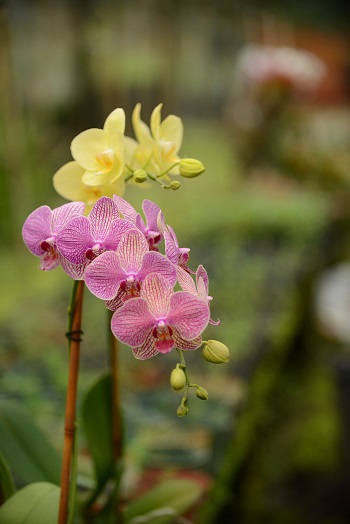Orchids are known for their elegant and exotic beauty, but they can be quite sensitive when it comes to watering. Proper watering is crucial for their health and longevity. Over-watering or under-watering can both have detrimental effects on orchids, leading to root rot, wilting, and even death. In this article, we will explore the signs that indicate whether you are over-watering or under-watering your orchids, helping you strike the right balance and keep your plants thriving.
Understanding the Orchid’s Natural Environment
Orchids are epiphytic plants that grow naturally in tropical and subtropical regions. They typically grow on trees, absorbing moisture from the air, rain, and occasional mist. Understanding their natural habitat is vital in determining their watering needs.
Signs of Over-Watering

Yellowing Leaves
If the leaves of your orchid are turning yellow and becoming translucent, it may indicate over-watering. Excessive moisture can cause the roots to suffocate and lead to nutrient deficiencies.
Soft or Mushy Roots
Over-watering can cause the roots to become soft and mushy. Healthy roots should be firm and white or greenish in color.
Foul Odor
A strong, unpleasant smell emanating from the potting medium or roots is a sign of over-watering and potential root rot.
Signs of Under-Watering
Wrinkled or Shriveled Leaves
When orchids don’t receive enough water, their leaves can become wrinkled or shriveled. This is a mechanism to reduce water loss and conserve moisture.
Dry Potting Medium
Check the potting medium by sticking your finger about an inch into it. If it feels dry or nearly dry, your orchid may be under-watered.
Lack of New Growth
Orchids that are consistently under-watered may fail to produce new leaves, stems, or flowers. This is their way of conserving energy during periods of drought.
Finding the Right Balance
Observe the Roots
Healthy orchid roots are plump, green, or silverish-white. Avoid over-watering if you see mushy or discolored roots.
Use the “Finger Rest”
Insert your finger about an inch into the potting medium. If it feels slightly damp, it’s an indication that your orchid has adequate moisture. If it feels dry, it’s time to water.
Watering Frequency
Orchids generally require watering once every 5-7 days, but this can vary depending on the orchid species, pot size, and environmental conditions. Pay attention to the plant’s individual needs.
Proper Drainage
Ensure that your orchid’s pot has drainage holes to prevent water from pooling at the bottom, leading to root rot.
Conclusion
Watering orchids can be a delicate balance, but with attentive observation and a few simple guidelines, you can determine whether you are over-watering or under-watering your precious plants. Remember to consider the natural environment of orchids, signs of over-watering like yellowing leaves and soft roots, as well as signs of under-watering such as wrinkled leaves and dry potting medium. Finding the right balance of moisture will help your orchids flourish and reward you with their stunning blooms for years to come.
Related Articles & Free Email Newsletter Sign Up
Black Orchids: A Fascinating Journey and Care Guide for These Exotic Beauties
How to Select the Best Orchid Fertilizer
How to Use the Sphag-n-Bag Recovery Method for Damaged Orchids




Comment here